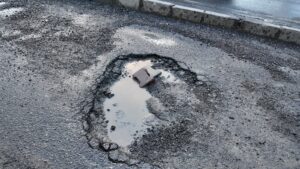The Chair of the Road Surface Treatments Association (RSTA), Keith Brett, has spoken to ITV Central about the challenge of ‘melting roads’ during high temperatures.
He told ITV Central that the majority of road surfaces are very resilient, however consistent temperatures above 50C would see some change in the surface characteristics.
Last week, the RSTA reminded its members to advise their customers that using grit dust on the roads during high temperatures can help keep the road network from melting excessively.
The dust, which can be applied through gritters, should be a 3mm down of granite or equivalent material and not salt as suggested by one national newspaper last week, which should never be used as it will be ineffective in these conditions.
When the dust is put on the network, it helps stops excess bleeding onto the surface and makes the lively bitumen inert. This should be done as temperatures reach their maximum-so from midday onwards.
During his interview with ITV Central, Mr Brett, who is also Contracts Director at Kiely Bros., urged drivers to be patient as gritters are out more in the coming days.
“Be careful, if you are overtaking the gritter, because these would be moving far slower than a normal gritter would in the winter. If you look at the road and you see the road looks discoloured, then please be aware it could be slippy as-well.”
He warned that even temperatures cool down, some parts of some roads will still be at risk of melting and will need repairing.
“Working from home, would also take some traffic off the road which could help.”
Even on a sunny day around 20 degrees can be enough to generate 50 degrees on the road, as the dark asphalt road surface absorbs a lot of heat, which builds up during the day.
As temperatures rise, the bitumen in roads can soften and rise to the top. This makes road surfaces ‘sticky’ and more susceptible to pressure loads from heavier vehicles, leading to ridging and rutting.
Mr Brett added: “Roads are built to accommodate a vast variety of situations from very freezing cold weathers to very hot summers and that’s difficult to make that all encompassing. If you live in a cold climate, you build a road for a cold climate. If you live in a hot climate, you build a road for a hot climate. We’re trying to accommodate every situation in the UK.”






















